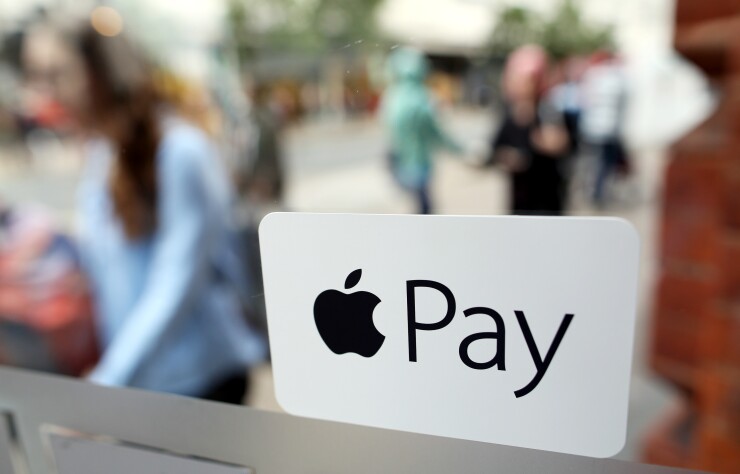Apple may be a latecomer to the buy now/pay later market, but its lending model for Apple Pay Later could provide significant revenue and cost advantages over rivals.
While Goldman Sachs manages credit risk for Apple Card, Apple will directly gauge Apple Pay Later borrowers’ creditworthiness, extend credit and hold the balances.
The latest move creates opportunities for Apple to offer basic “Pay in 4” interest-free BNPL loans repayable in four equal amounts over six weeks, at near zero cost to itself by cutting out intermediaries.
Goldman Sachs is still involved—it’s issuing the bank credentials needed for Apple Pay Later to connect to merchants through Mastercard Installments. But Apple will manage Apple Pay Later loans through a wholly owned subsidiary called Apple Financing LLC, which has state lending licenses and operates separately from Apple, the Cupertino, California-based tech giant said in a briefing Thursday with reporters.
The California tech giant's take on pay-in-four installment loans has a top-of-wallet positioning that banks and merchants are unlikely to be able to match.
“Apple has pulled a classic fintech move here. With Apple Pay Later they’re taking on the lending and issuing function of a bank, without the need for a bank charter or any of the routine depository requirements in this category,” said Richard Crone, a principal with Crone Consulting LLC.
Unlike BNPL fintech firms like Affirm and Klarna that typically have to hunt for venture capital to fund loans, Apple’s size and strong balance sheet means it could easily fund Apple Pay Later loans in-house at no cost, according to Crone.
The cost of servicing Apple Pay Later loans is also guaranteed to be low, with payments and billing all taking place electronically within the Apple Wallet with pre-enrolled payment credentials, Crone noted.
Apple will be earning revenue from merchants who pay a fee through Mastercard Installments when a BNPL loan closes. And Apple may also earn interchange on the card payment, which Goldman will share with Apple, according to Crone. "And when someone doesn’t pay off their balance, there will be additional revenue from fees or processing the late payment,” Crone said.
Apple Pay Later will use a "soft credit pull" with no effect on a prospective borrower's credit score, and so far the company has no plans to report payment history to the credit bureaus.
One of
By contrast, Apple Pay users will be notified at checkout whether an Apple Pay Later loan is available. After checkout they will see all payments due in the next 30 days for the service on a calendar within the Apple Wallet, Apple said.
“When Apple switches on BNPL loans within the Wallet, they’ll be tapping into a whole new wave of consumers who might not have considered a BNPL loan before. And if Apple extends this to stores eventually, where more than 80% of all retail sales take place, they’ll have a pre-emptive opportunity to promote it each time someone uses Apple Pay,” Crone said.







